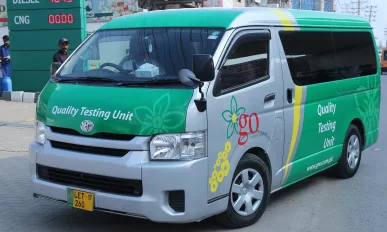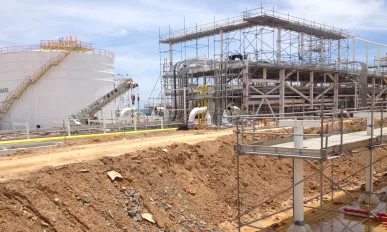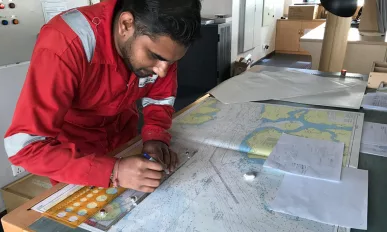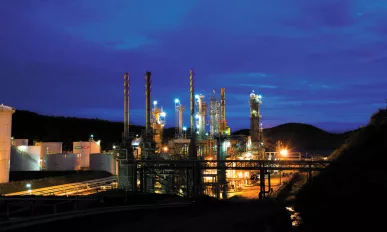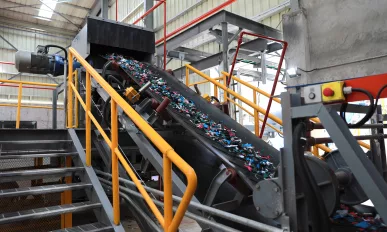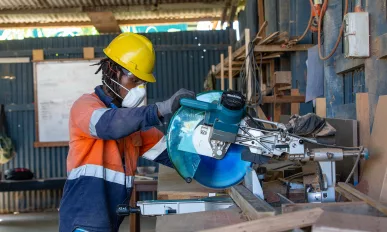Issue 43
Retail Prodigy Group : Ramping up the Retail Experience
Through its NIKE, TOMS and Timbuk2 brands, Australia’s Retail Prodigy Group is creating an engaging and seamless customer experience across multiple channels, a must in the modern retail world.
Percetakan Nasional Malaysia Berhad (PNMB) : The Futureproof Printer
Percetakan Nasional Malaysia Berhad (PNMB) has been a Malaysian mainstay since 1888, the organisation now turning to digital solutions and private investment as ways to diversify from its traditional printing base.
Mun Shung & Partners : Putting People First
Having arrived in Malaysia on a mission to prove a concept in 2011, Melvin Lim has enjoyed a remarkable growth story with Mun Shung & Partners, the architecture firm built on a passion to transform communities.
Lintasarta : Indonesia’s One-stop ICT Solution Provider
Able to offer everything from broadband and cloud to telco and e-health solutions, Lintasarta is playing a leading role in the country’s rapid digitalisation.
Innovative Agro Industry : Inspiring Agrarian Independence
Innovative Agro Industry continues to drive developments across a wide variety of agricultural endeavours, providing PNG producers with vital commercialisation opportunities and employment to many other locals.
Gas & Oil Pakistan Ltd : Petroleum Made Personal
Gas & Oil Pakistan Ltd is embodying Pakistan’s innovative spirit, advancing and expanding its O&G offering at rapid pace in order to better serve its beloved, growing network of local customers.
DTEC Petroleum Group : EPC With Purpose
DTEC Petroleum Group continues to serve the engineering and construction needs of major petroleum projects in Malaysia and elsewhere in the region and worldwide.
Belait Shipping : Helping Brunei Blossom
From philanthropy and charitable efforts to employee and enterprise empowerment, the local entrepreneurial success story that is Belait Shipping is helping to build a better future for the Darussalam.
Puma Energy Papua New Guinea : Energising Communities in PNG
Empowering SMEs, investing in individuals and infrastructure, and delivering a complete fuel solution to urban and rural communities alike, Puma Energy PNG continues to take great pride in being a local socioeconomic stalwart.
Chip Mong INSEE Corporation : A Cambodian Champion
CMIC brings a can-do attitude to Cambodian cement by assisting the country with quality products, community care and a local emphasis. Nicolas George, CEO, explains the motive behind this mandate.
Tawap Kamen Investment Group : Empowering PNG
Tawap Kamen Investment Group is helping to pave the way for Papua New Guinea’s resource-led development, backing major projects with exemplary service and unrivalled experience.
ZTE : Grabbing a Network Slice
“The most exciting part of 5G is connecting things,” comments Tu Jiashun, Principal Scientist at Chinese telecoms equipment producing giant ZTE. “5G not only creates value for the current telco industry but also opens up opportunities for the digital transformation of other vertical industries, or enterprises.
Anytime Fitness Asia : From Fitness to Wellness
Though trends were formerly led by practitioners in fitness, the gym industry is becoming led by the consumer. Rey Bolivar, CEO of Anytime Fitness Asia, talks to us about the next decade of fitness and wellness.
Gilbert Houngbo on India’s Agrarian Development
IFAD President, Gilbert Houngbo, outlines the development of agriculture in India and how to ensure its success.
How Alibaba’s Singles Day Profits from Technology
It began as an obscure Chinese holiday celebrating the country’s bachelors every November 11th. However, these days Singles Day is better known for being the world’s largest 24-hour shopping sale, run by Chinese ecommerce giant Alibaba.








